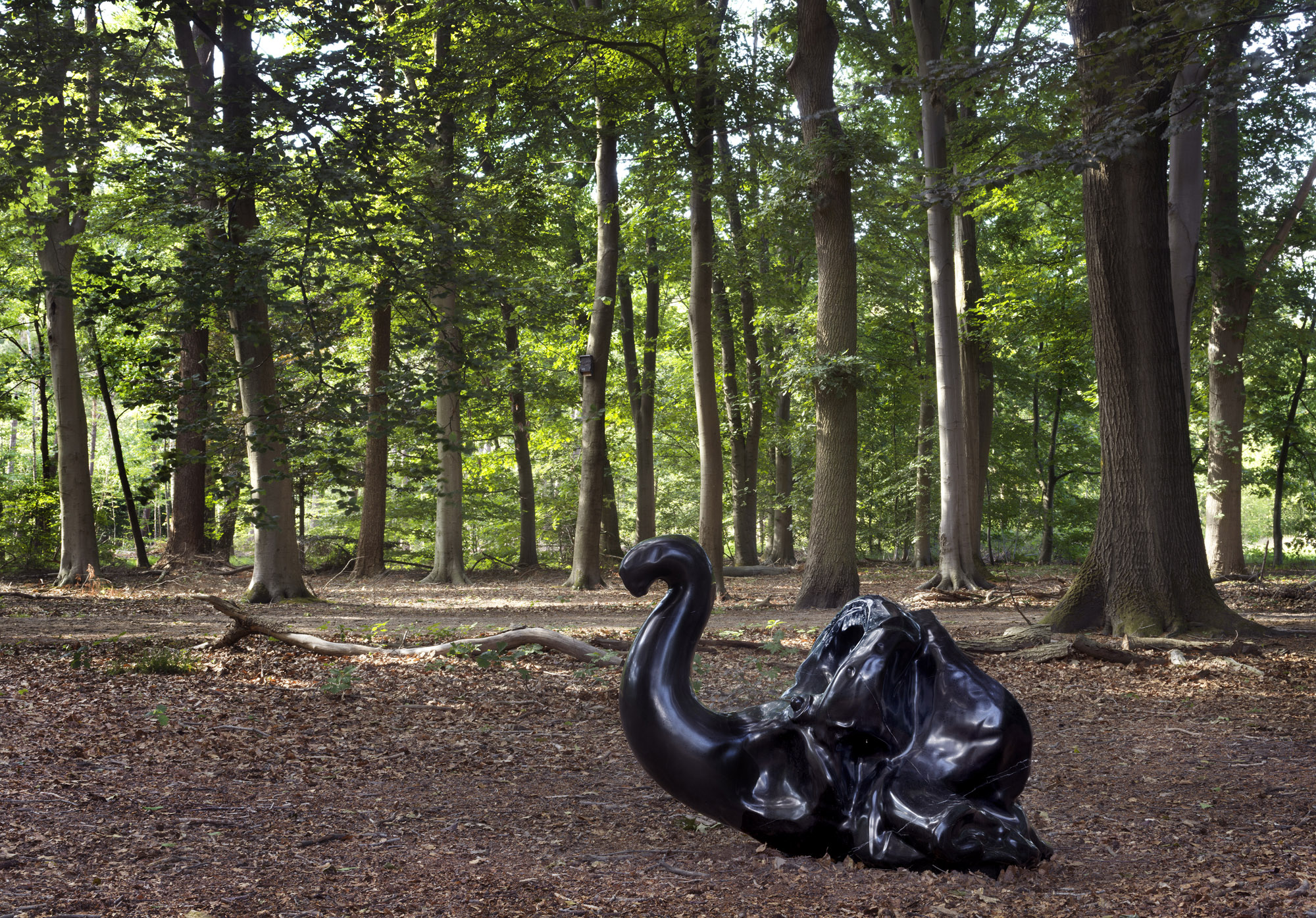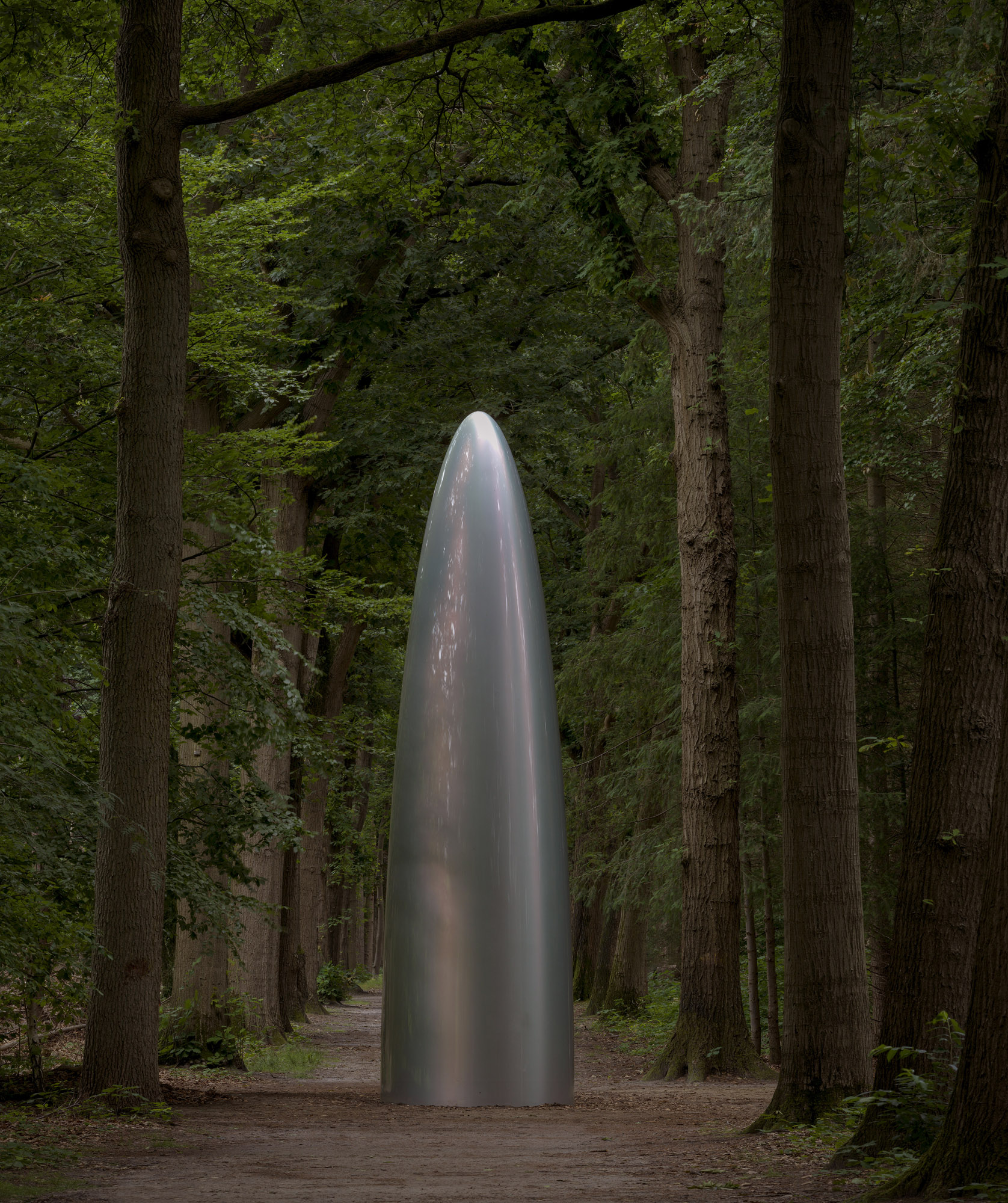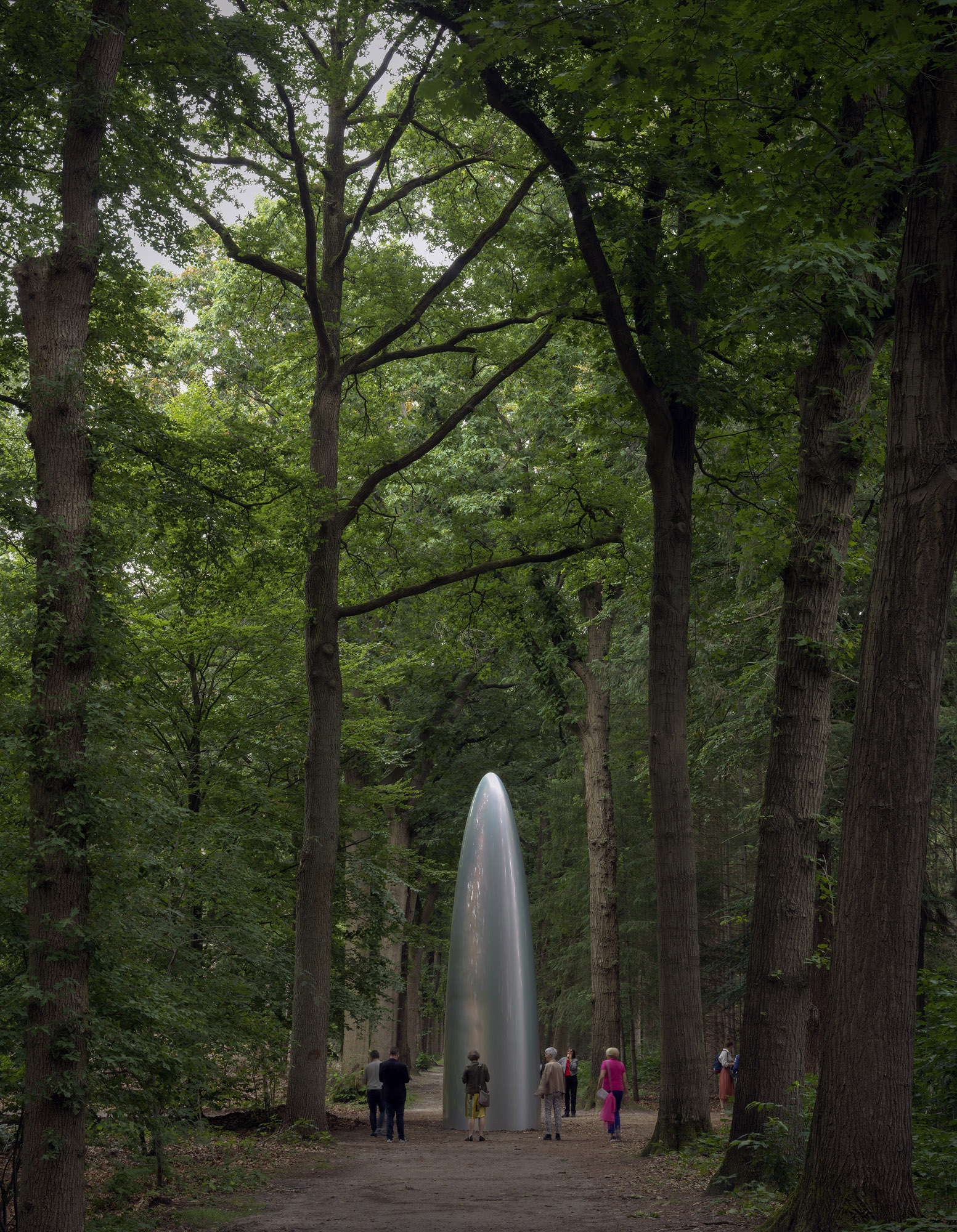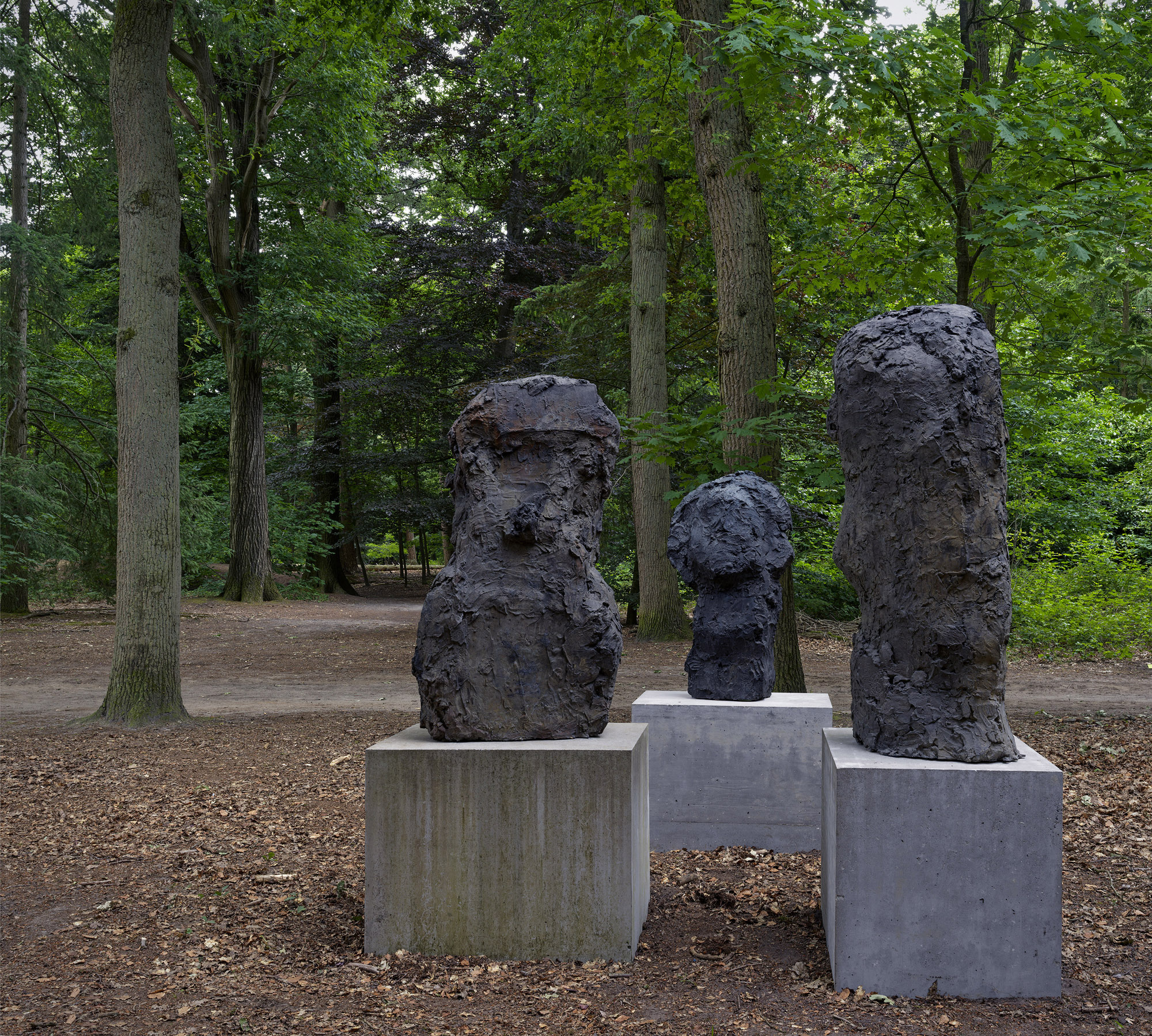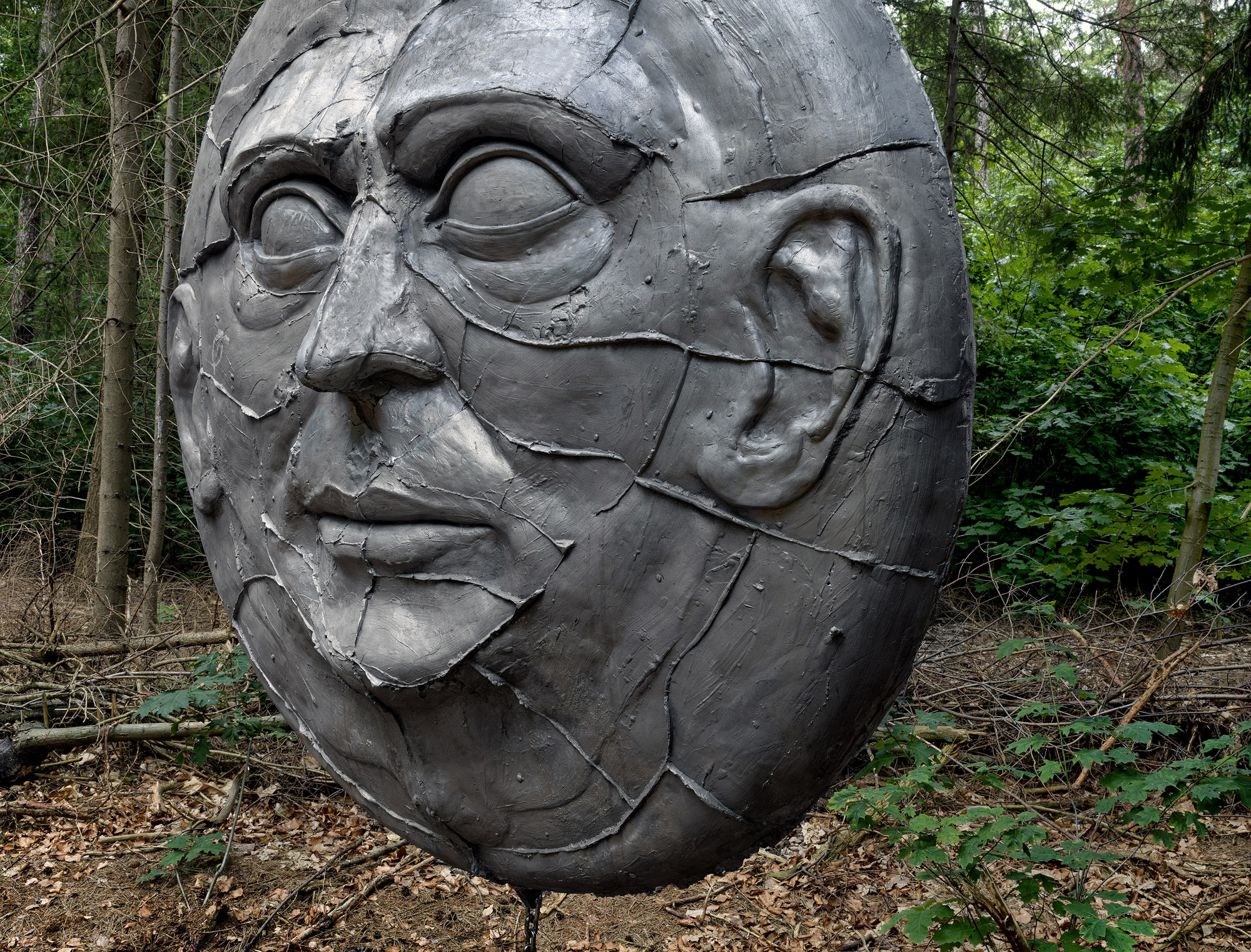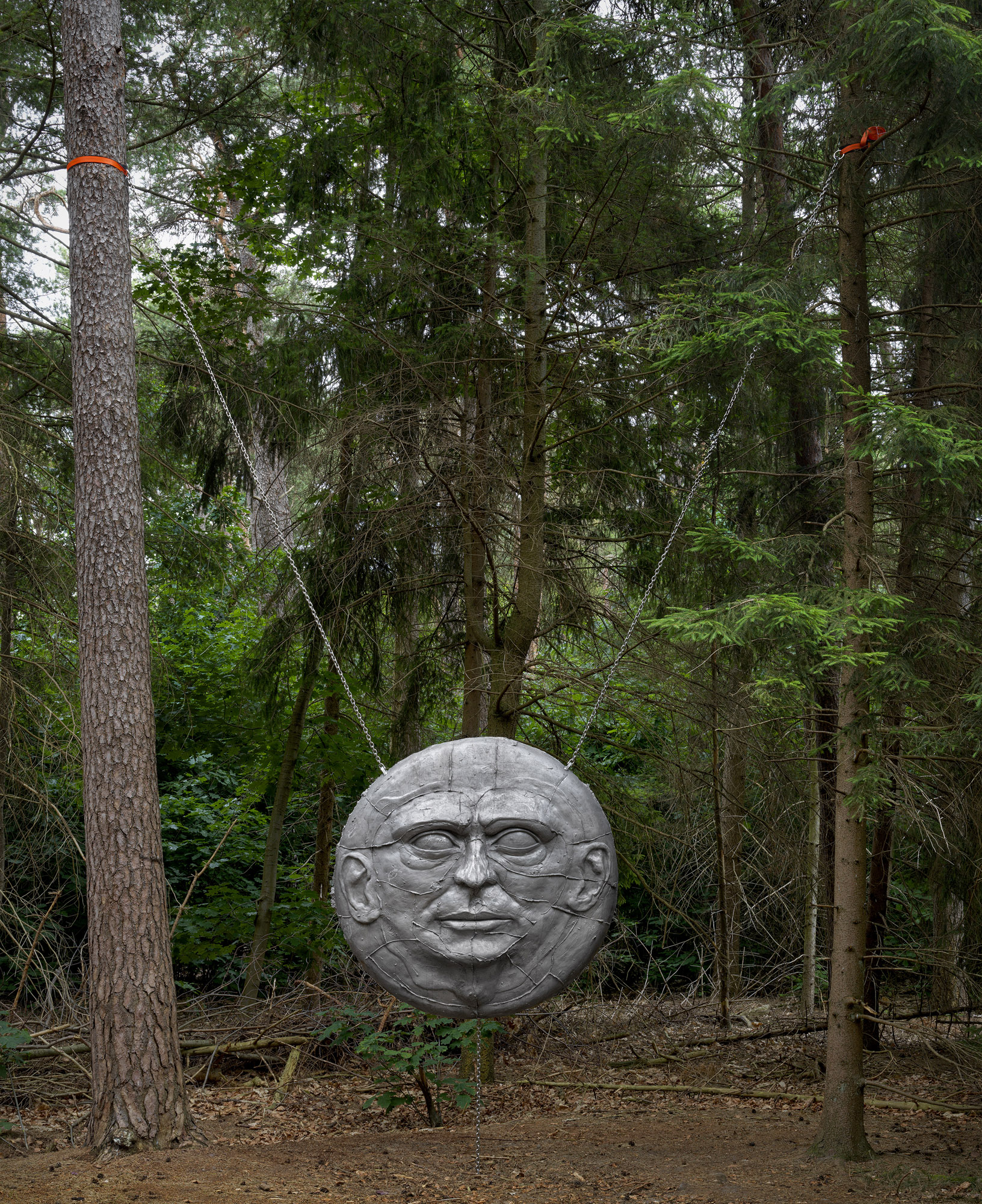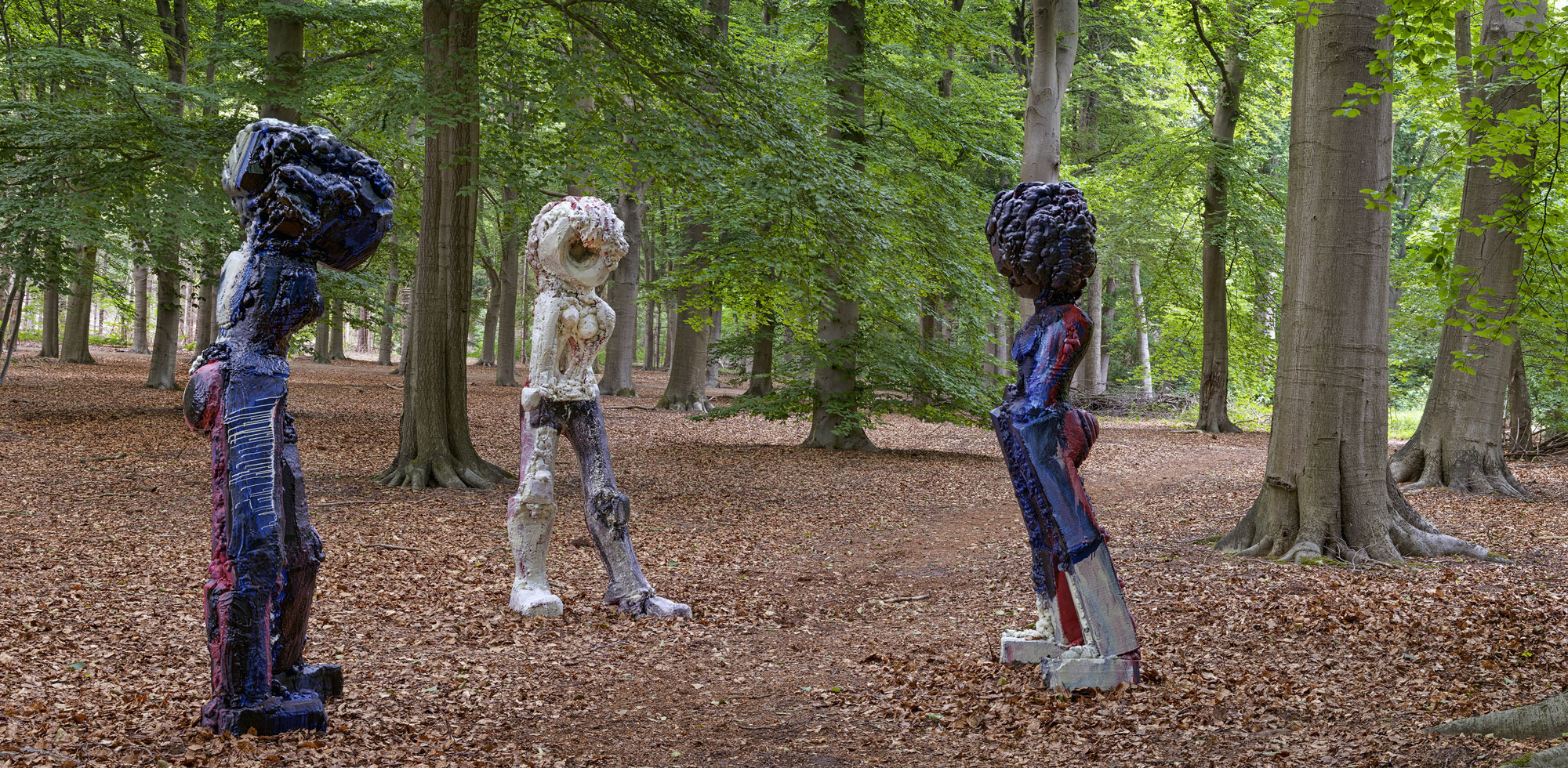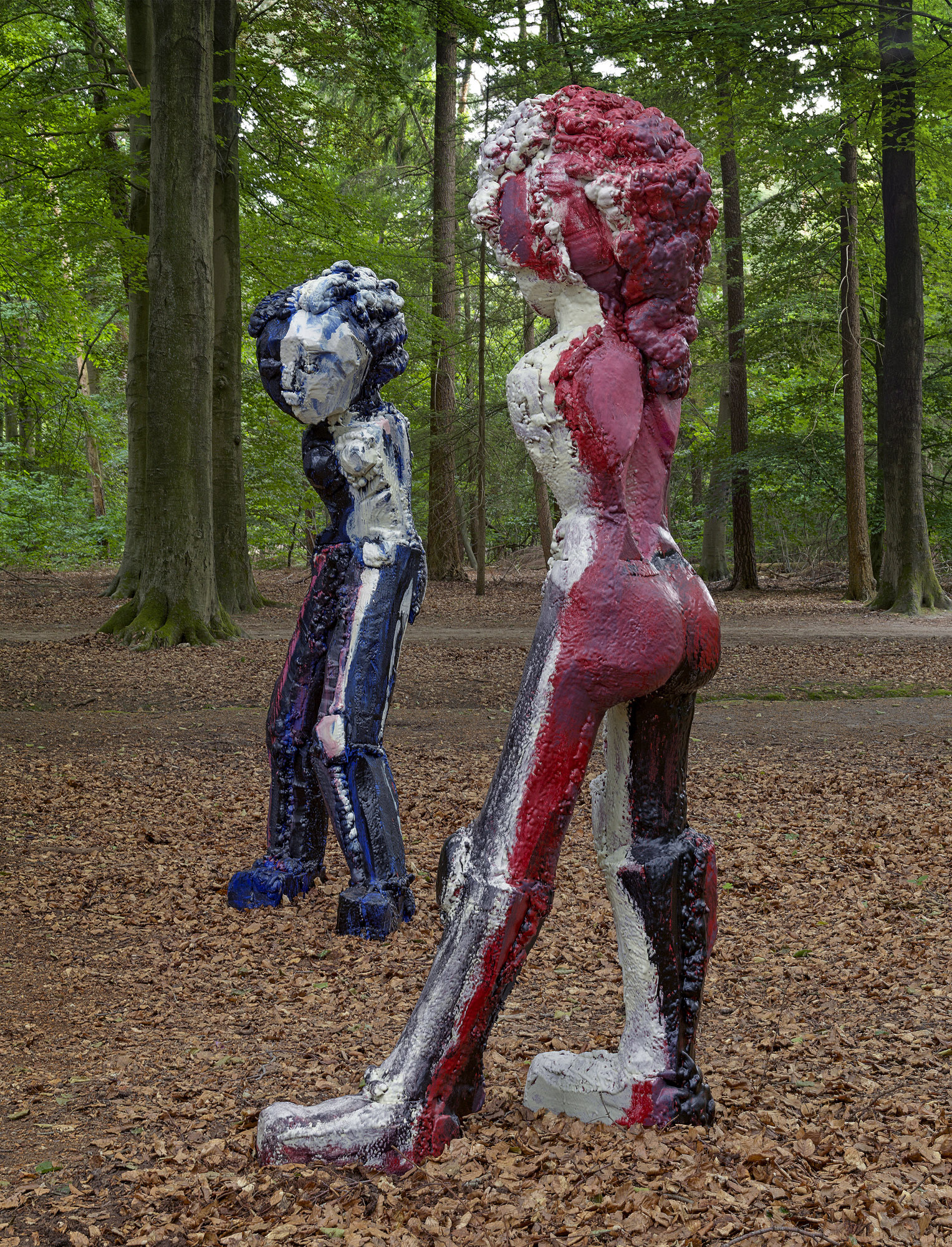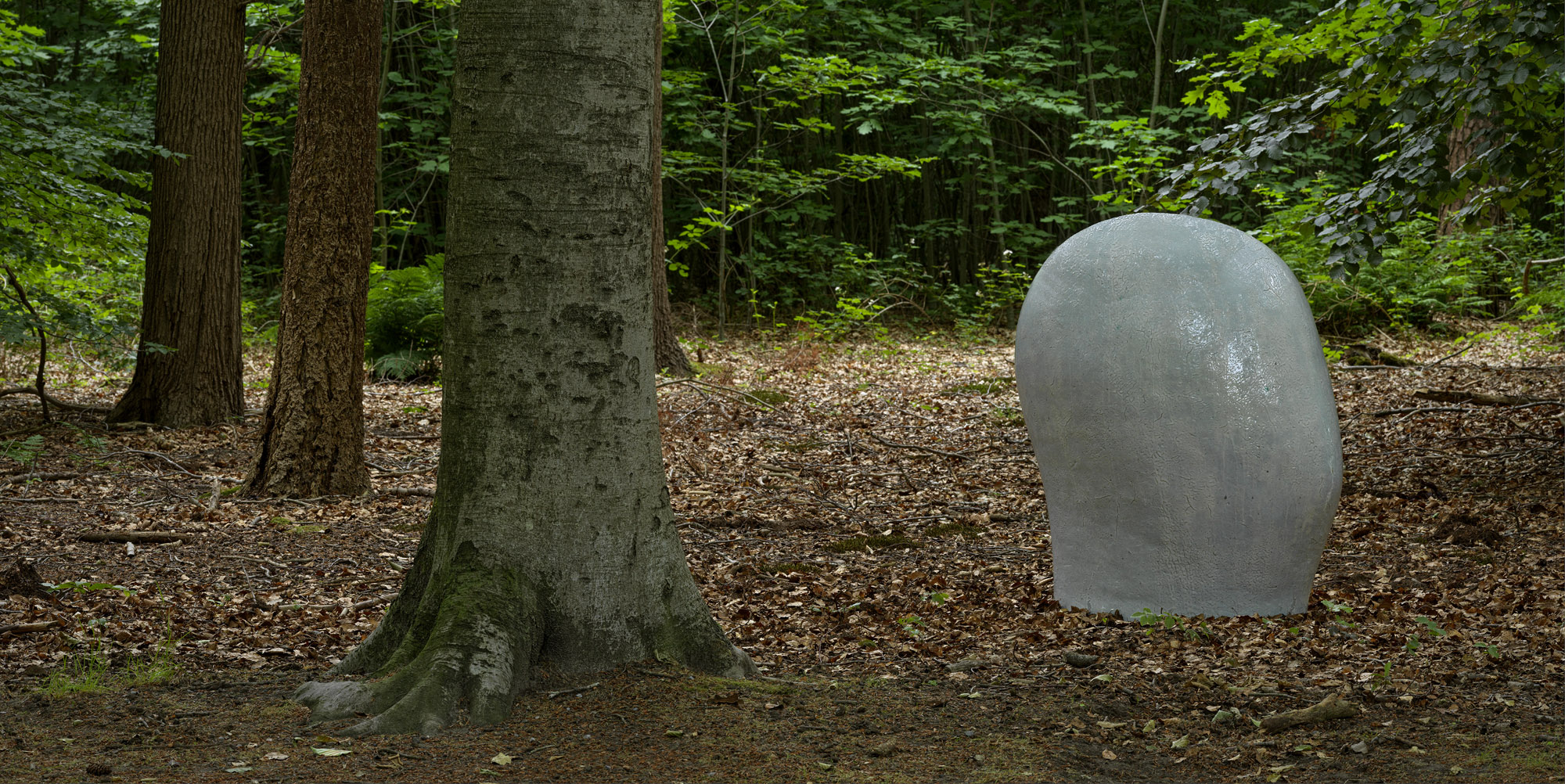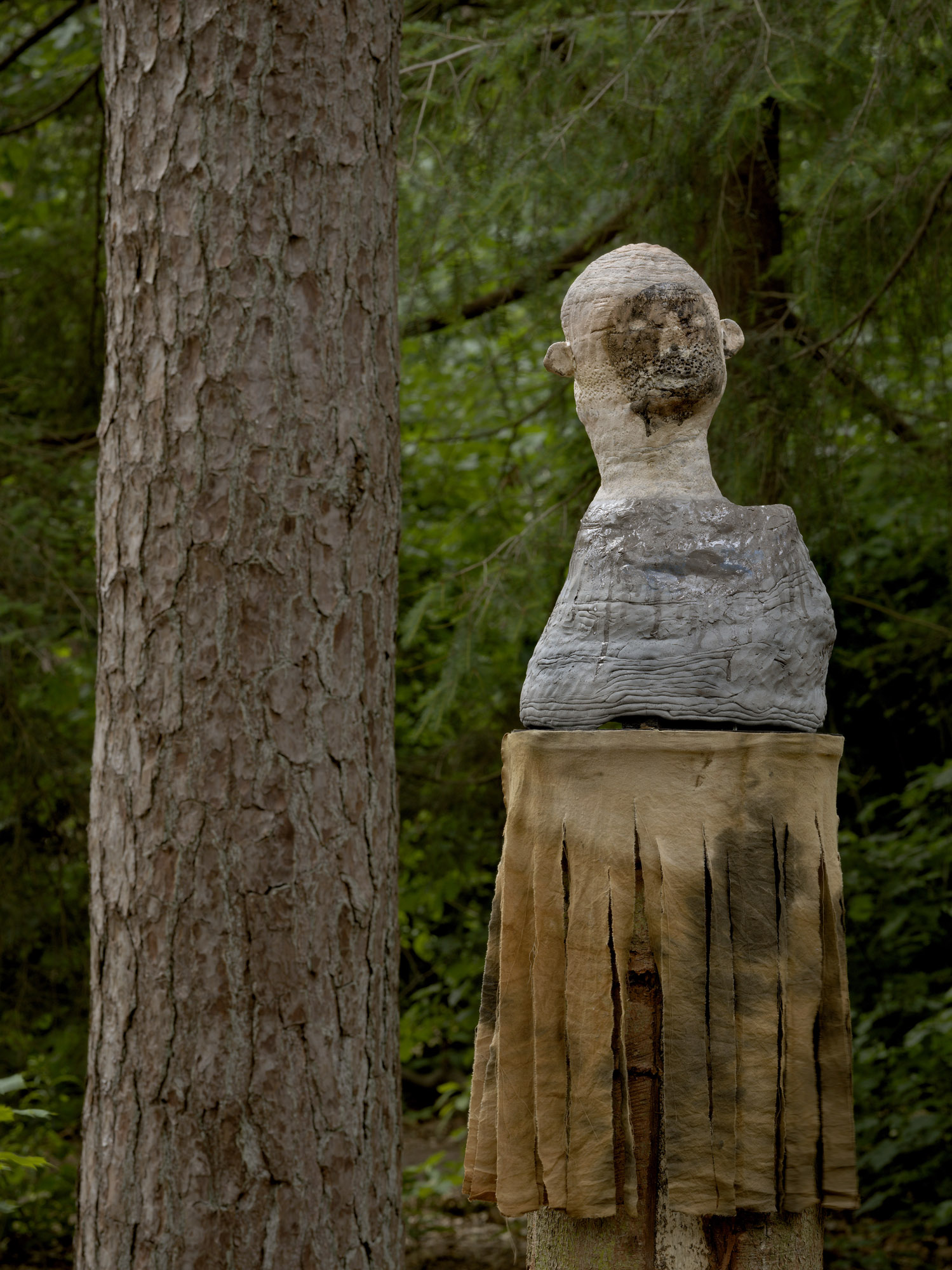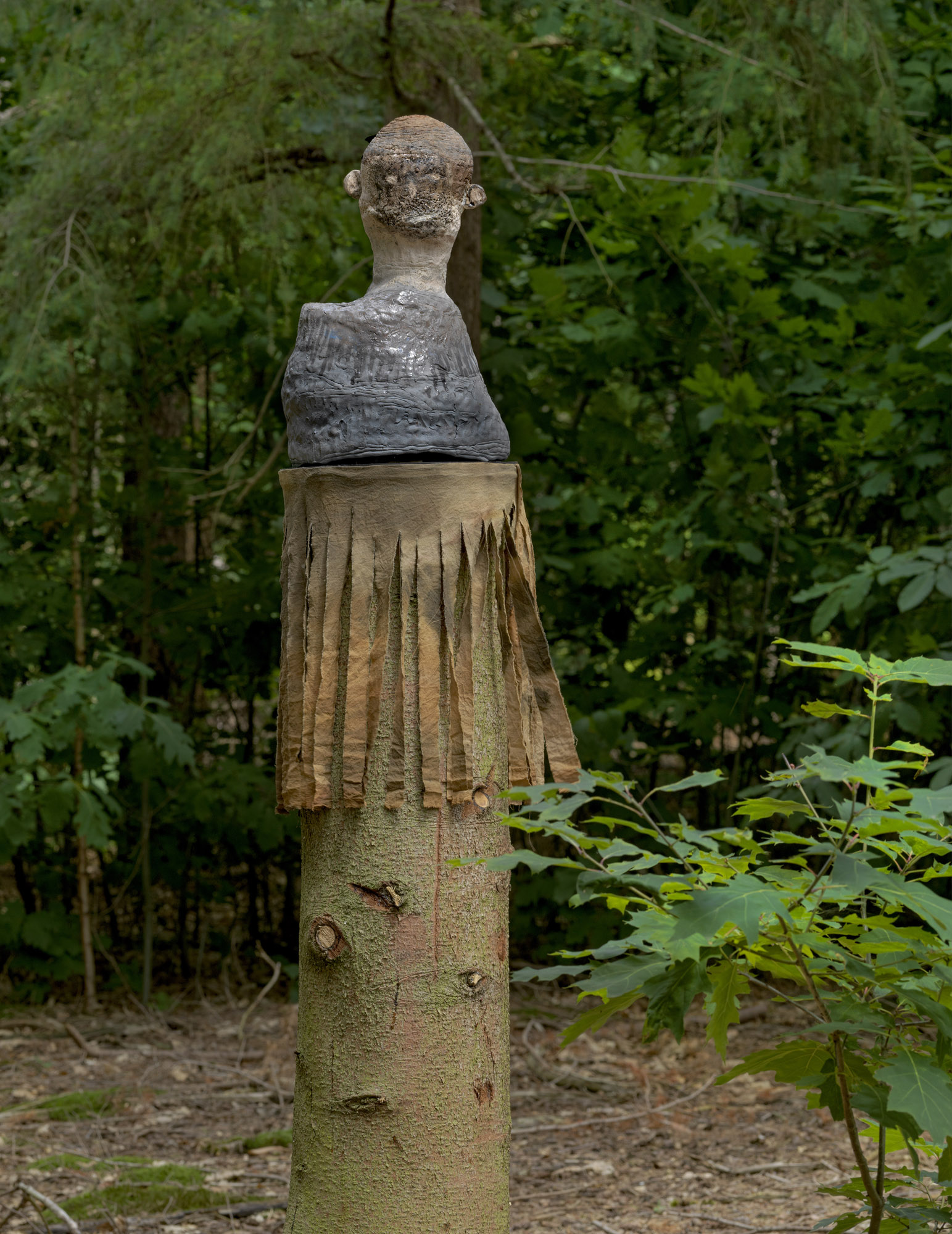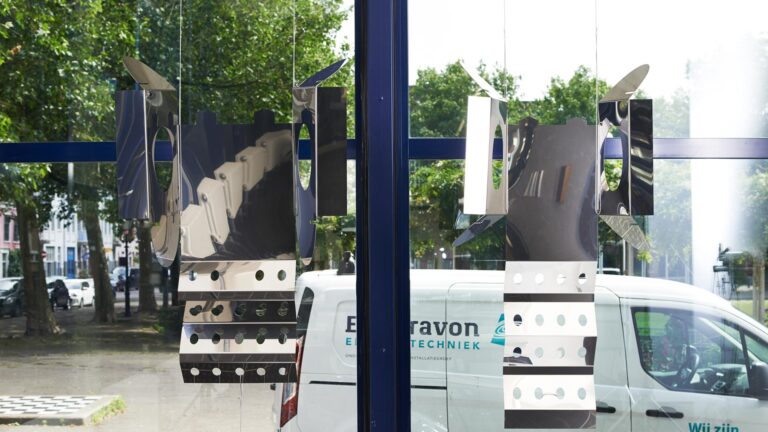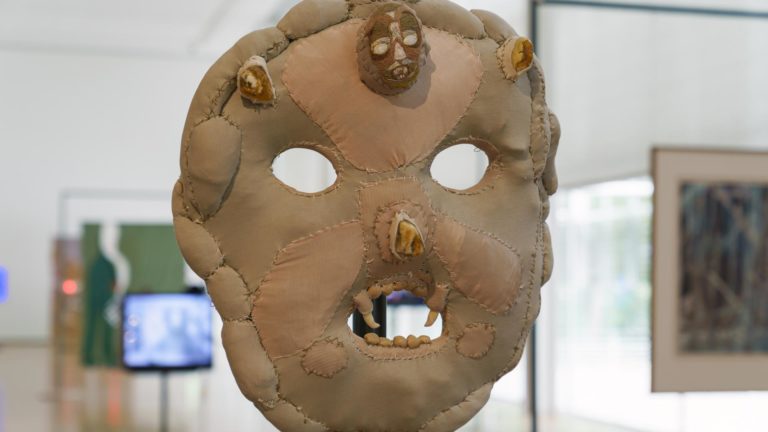Artists: Alma Allen, Evgeny Antufiev, Marieke Bolhuis, Gisela Colón, Kim Dacres, Hans Josephsohn, Susanne Ring, Lukas Schmenger, Henk Visch, Not Vital
Exhibition title: Godhead – Idols in Times of Crisis
Venue: Lustwarande, Tilburg, The Netherlands
Date: June 26 – October 2, 2022
Photography: Gert Jan van Rooij / all images copyright and courtesy of the artists and Lustwarande
Now, in the wake of anti-racism demonstrations in the United States and Europe, with statues of historically charged figures daubed with paint and removed from city squares, now that Putin has been taken down from his pedestal in Western unison and at the same time he is positioning himself even more as untouchable in his own country, renewed reflection on the concept of idol, in a broad sense, is called for.
The idol (from the Greek eidolon, meaning ‘image’) was developed to express myth and faith in human form. However, over the course of history, devotion has increasingly given way to secular veneration. The idol gradually came to be worshipped and admired as an aesthetic, autonomous object. The erection of statues and monuments in the public space is a result of this shift. As the power of the Church waned and secular power increasingly took its place, statues and monuments in squares and parks were not only objects of worship but also a strong representation and perpetuation of the ideology of the ruling power. This was true until the 20th century, with many statues of dictators such as Stalin, Mao and Saddam Hussein, who only focused on self-aggrandizement and have since been almost completely demolished.
While the new iconoclasm shows that images of idols can lead to great division, the strongest power of idols in general is still to promote connection and solidarity. The images of religious figures, such as Jesus on the cross, Mary, Shiva and Buddha, are indisputably the most powerful in this respect. The strength and the beneficial effect of idols is particularly evident in times of crisis and disaster, when humans are most aware of their vulnerability. At such moments, the idol provides hope to humankind, offering support and comfort. This theme is very relevant in a world where multiple existential questions compete for our attention: What is our identity? How do we, as human beings, relate to one another and to nature now that there is a growing awareness of the Earth’s vulnerability? Therefore the craving for idols is greater than ever in the current global crisis.
In other words, a new ethics is needed. Visual art can play a pioneering role here. This search for a new ethics, along with commemoration and respect for our fellow human beings – marginalised, persecuted, abused, enslaved, murdered – is far from new. The first turning point came in the late nineteenth century, with Rodin’s Les Bourgeois de Calais (1888), which depicts six burghers who, in 1347, dressed only in shirts and with nooses around their necks, surrendered themselves to the English king in exchange for their city being spared. Monuments to victims later followed, such as the National Monument on Dam Square in Amsterdam (1956), to commemorate the victims of WWII; the Homomonument in Amsterdam (1987), the first monument in the world to commemorate all the gay men and women who have been persecuted because of their sexual orientation, which has since been imitated in other Western cities, such as Berlin, with its monument by Elmgreen & Dragset (2008); memorials to persecuted Jewish people, including the controversial Holocaust Memorial in Berlin (2005) and the Holocaust Memorial of Names (2021) in Amsterdam, the Nationale Slavery Monument (2002), the HIV/AIDS Monument (2016) and the Nelson Mandela Memorial (2021), all three of them in Amsterdam.
Within visual art, the idol was also transformed. The visual language became more social and at the same time more personal, as a precursor to political changes. An often-cited example is Hamburg’s Mahnmal gegen Faschismus (‘monument against fascism’,1986) by Jochen and Esther Gerz. Initially, this consisted of a twelve-metre-high column clad with lead. Passers-by were urged upon to participate actively by scratching their names in lead as a promise to remain vigilant to the danger of fascism returning. As soon as people could no longer reach free space to scratch their names, the artists lowered the column partly into the ground so that free space came into reach. By 1993, the column had disappeared. Only a lead plate, one square metre in size, remained.
In 1992, Thomas Schütte attracted the attention of the world press with Die Ankunft der Fremden, a group of statues on top of the Fridericianum, made specially for Documenta 9 as an explicit criticism of the migrant and refugee issues ignored by Western Europe. In the same year, Jeff Koons elevated his personal sex life to an idol in his infamous touring exhibition Made in Heaven. Artists such as Sylvie Fleury and Joana Vasconcelos have declared the commercial product an idol from a female perspective – and with great success. Damien Hirst stole the show when it comes to commercialism with his For the Love of God (2007), a platinum skull covered with 8,601 diamonds.
This small selection from the recent past shows that the design of monuments and idols is constantly changing. Every era needs its own icons.
GODHEAD – Idols in Times of Crisis investigates the power of contemporary figurative and abstract sculpture as idols by presenting a connected yet very diverse group of works which, to a greater or lesser extent, consciously or unconsciously, refer to the tradition of devotional sculpture, the statue, the monument, the totem, the amulet and the talisman, all in their own individual way.
GODHEAD – Idols in Times of Crisis does not aim to offer solutions for the problematic relationship that has arisen with historical idols, but tries instead to make the contemporary viewer aware of the power of the idol, which connects humanity through times and lets mythologies intertwine with the present, where belief in higher powers and forces is still abundant.
GODHEAD – Idols in Times of Crisis will present a select sample of contemporary idols, an alternative scenario for the empty pedestals that are emerging, a scenario that can offer new meaning, hope and support to the public space. Presenting these sculptures in the public space, or even better, in a woodland setting, where humans, nature and art come together, lends them greater strength. For the viewer, these works may evoke associations with primal images, such as the Venus von Willendorf and the Lionman, even though each depicts ideas and ideals of the modern day in its own way.
Alma Allen, Not yet Titled (2021), bronze, 68 x 70 x 340 cm, courtesy the artist & MendesWood DM, Brussels
Alma Allen, Not yet Titled (2021), orizaba marble, 111 x 134.5 x 116.5 cm, courtesy artist & MendesWood DM, Brussels
Alma Allen, Not yet Titled (2021), orizaba marble, 111 x 134.5 x 116.5 cm, courtesy artist & MendesWood DM, Brussels
Evgeny Antufiev, Obelisk (2020), engraved travertin, 300 x 60 x 60 cm, courtesy the artist & z2o Sara Zanin, Roma
Evgeny Antufiev, Obelisk (2020), engraved travertin, 300 x 60 x 60 cm, courtesy the artist & z2o Sara Zanin, Roma
Evgeny Antufiev, Obelisk (2020), engraved travertin, 300 x 60 x 60 cm, courtesy the artist & z2o Sara Zanin, Roma
Evgeny Antufiev, Obelisk (2020), engraved travertin, 300 x 60 x 60 cm, courtesy the artist & z2o Sara Zanin, Roma
Gisela Colon, Quantum Shift (Parabolic Monolith Sirius Titanium) (2021), engineered aerospace carbon fiber, 762 x 243 x 305 cm, courtesy the artist & Gavlak, Los Angeles, Palm Beach
Gisela Colon, Quantum Shift (Parabolic Monolith Sirius Titanium) (2021), engineered aerospace carbon fiber, 762 x 243 x 305 cm, courtesy the artist & Gavlak, Los Angeles, Palm Beach
Gisela Colon, Quantum Shift (Parabolic Monolith Sirius Titanium) (2021), engineered aerospace carbon fiber, 762 x 243 x 305 cm, courtesy the artist & Gavlak, Los Angeles, Palm Beach
Hans Josephsohn, Untitled (1990-9i), brass, 120 X 70 X 48 cm; Untitled (Lola) (2002), brass, 151 x 84 x 62 cm; Untitled (2004) c brass, 167 x 75 x 61 cm, courtesy Kesselhaus Josephsohn/Galerie Felix Lehner
Hans Josephsohn, Untitled (1990-9i), brass, 120 X 70 X 48 cm; Untitled (Lola) (2002), brass, 151 x 84 x 62 cm; Untitled (2004) c brass, 167 x 75 x 61 cm, courtesy Kesselhaus Josephsohn/Galerie Felix Lehner
Hans Josephsohn, Untitled (1990-9i), brass, 120 X 70 X 48 cm; Untitled (Lola) (2002), brass, 151 x 84 x 62 cm; Untitled (2004) c brass, 167 x 75 x 61 cm, courtesy Kesselhaus Josephsohn/Galerie Felix Lehner
Hans Josephsohn, Untitled (1990-9i), brass, 120 X 70 X 48 cm; Untitled (Lola) (2002), brass, 151 x 84 x 62 cm; Untitled (2004) c brass, 167 x 75 x 61 cm, courtesy Kesselhaus Josephsohn/Galerie Felix Lehner
Henk Visch, Du Livre du Matin (2018), bronze, 220 x 140 120 cm, courtesy artist & Tim van Laere Gallery, Antwerpen
Henk Visch, Du Livre du Matin (2018), bronze, 220 x 140 120 cm, courtesy artist & Tim van Laere Gallery, Antwerpen
Henk Visch, Piazza del Popolo (2006), bronze, 210 x 135 x 135 cm, courtesy the artist & Tim van Laere Gallery, Antwerpen
Henk Visch, Piazza del Popolo (2006), bronze, 210 x 135 x 135 cm, courtesy the artist & Tim van Laere Gallery, Antwerpen
Henk Visch, Piazza del Popolo (2006), bronze, 210 x 135 x 135 cm, courtesy the artist & Tim van Laere Gallery, Antwerpen
Kim Dacres, Sojourner (2022), recycled car and motorcycle tires, pressure treated wood, braided bicycle tubes, zip ties, bicycle parts, screws, spray enamel, 137,16 x 45,72x 43,18 cm, courtesy the artist
Kim Dacres, Sojourner (2022), recycled car and motorcycle tires, pressure treated wood, braided bicycle tubes, zip ties, bicycle parts, screws, spray enamel, 137,16 x 45,72x 43,18 cm, courtesy the artist
Kim Dacres, Sojourner (2022), recycled car and motorcycle tires, pressure treated wood, braided bicycle tubes, zip ties, bicycle parts, screws, spray enamel, 137,16 x 45,72x 43,18 cm, courtesy the artist
Kim Dacres, Sojourner (2022), recycled car and motorcycle tires, pressure treated wood, braided bicycle tubes, zip ties, bicycle parts, screws, spray enamel, 137,16 x 45,72x 43,18 cm, courtesy the artist
Lukas Schmenger, Portrait of the artist as a gong (2022), cast aluminium, steel chains, 171 x 171 x 41 cm, courtesy the artist
Lukas Schmenger, Portrait of the artist as a gong (2022), cast aluminium, steel chains, 171 x 171 x 41 cm, courtesy the artist
Lukas Schmenger, Portrait of the artist as a gong (2022), cast aluminium, steel chains, 171 x 171 x 41 cm, courtesy the artist
Lukas Schmenger, Portrait of the artist as a gong (2022), cast aluminium, steel chains, 171 x 171 x 41 cm, courtesy the artist
Marieke Bolhuis, Sisters / Grosse Geister II (2021), iron, foam, polyurea DD tacker, 3 elements, 70 x 70 x 245 cm / 7o x 70 x 248 cm / 100 x 60 x 242 cm courtesy the artist
Marieke Bolhuis, Sisters / Grosse Geister II (2021), iron, foam, polyurea DD tacker, 3 elements, 70 x 70 x 245 cm / 7o x 70 x 248 cm / 100 x 60 x 242 cm courtesy the artist
Marieke Bolhuis, Sisters / Grosse Geister II (2021), iron, foam, polyurea DD tacker, 3 elements, 70 x 70 x 245 cm / 7o x 70 x 248 cm / 100 x 60 x 242 cm courtesy the artist
Not Vital, HEAD (2016), glazed ceramic, 142 x 88 x 115 cm, courtesy the artist &Thaddaeus Ropac, Paris, Salzburg
Not Vital, HEAD (2016), glazed ceramic, 142 x 88 x 115 cm, courtesy the artist &Thaddaeus Ropac, Paris, Salzburg
Not Vital, HEAD (2016), glazed ceramic, 142 x 88 x 115 cm, courtesy the artist &Thaddaeus Ropac, Paris, Salzburg
Not Vital, HEAD (2016), glazed ceramic, 142 x 88 x 115 cm, courtesy the artist &Thaddaeus Ropac, Paris, Salzburg
Susanne Ring, Beginning and end (2022), (partly) glazed ceramics, wood, 3 elements, 50 x 34 x 34 cm / 47 x 32 x 28 cm / 70 x 47 x 47 cm courtesy artist & Galerie Fontana, Amsterdam
Susanne Ring, Beginning and end (2022), (partly) glazed ceramics, wood, 3 elements, 50 x 34 x 34 cm / 47 x 32 x 28 cm / 70 x 47 x 47 cm courtesy artist & Galerie Fontana, Amsterdam
Susanne Ring, Beginning and end (2022), (partly) glazed ceramics, wood, 3 elements, 50 x 34 x 34 cm / 47 x 32 x 28 cm / 70 x 47 x 47 cm courtesy artist & Galerie Fontana, Amsterdam
Susanne Ring, Beginning and end (2022), (partly) glazed ceramics, wood, 3 elements, 50 x 34 x 34 cm / 47 x 32 x 28 cm / 70 x 47 x 47 cm courtesy artist & Galerie Fontana, Amsterdam
Susanne Ring, Beginning and end (2022), (partly) glazed ceramics, wood, 3 elements, 50 x 34 x 34 cm / 47 x 32 x 28 cm / 70 x 47 x 47 cm courtesy artist & Galerie Fontana, Amsterdam
Susanne Ring, Beginning and end (2022), (partly) glazed ceramics, wood, 3 elements, 50 x 34 x 34 cm / 47 x 32 x 28 cm / 70 x 47 x 47 cm courtesy artist & Galerie Fontana, Amsterdam
Susanne Ring, Beginning and end (2022), (partly) glazed ceramics, wood, 3 elements, 50 x 34 x 34 cm / 47 x 32 x 28 cm / 70 x 47 x 47 cm courtesy artist & Galerie Fontana, Amsterdam




